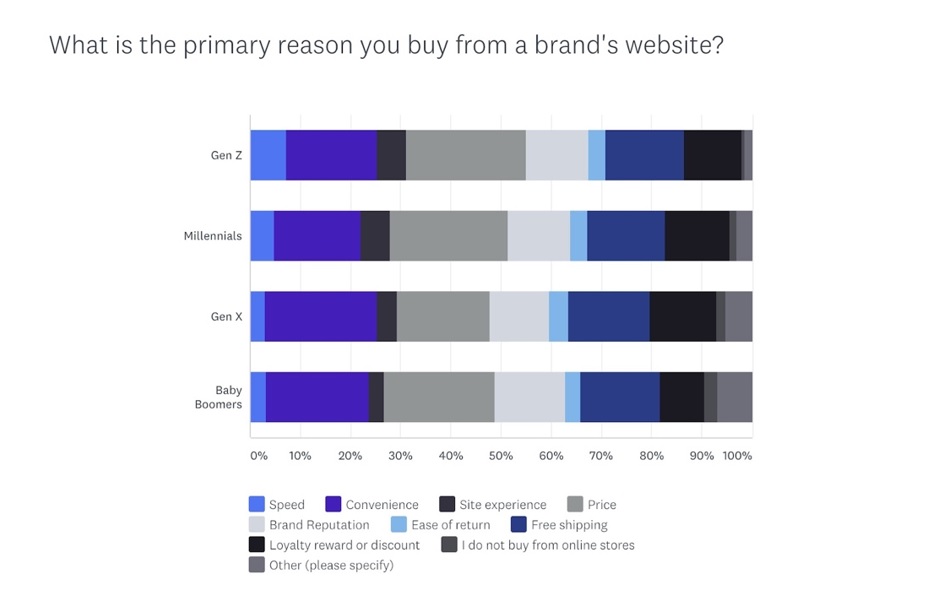
The eCommerce market has been on a steady upward trajectory for nearly a decade, and it’s showing no signs of slowing down. By next year, the online global retail market is expected to reach an all-time high of $4.9 billion, which is more than double what it held just three years ago.
One reason why the eCommerce market is so incredibly large is because it now just takes a few clicks for any entrepreneur with a great business idea to launch an online company. However, just because it is possible for anyone to be a business owner online does not mean that every eCommerce store is actually succeeding. In fact, over 90% of new online businesses are shut down after just four months.
Clearly, not all online stores are created equal, and unfortunately, many are destined to fail from the start. This is often due to the fact that first-time business owners decide to create an online business with little to no experience or strategy.
Let’s discuss these fatal mistakes that many eCommerce entrepreneurs make that could potentially set your store up for disaster – and how you can avoid them.
Throwing together a site
Building your online store is one of the most important steps to creating an ecommerce business, but many eager entrepreneurs want to get this step done as quickly as possible.
While choosing a general, pre-made website template can be great, it can lead to a generic platform that will offer little benefits to customers. For example, if you want to sell products on a WordPress site, there are several key steps and integrations needed to adjust the functionality for sales.
According to a report from Big Commerce, the functionality and overall site experience weighs heavily on a consumer’s decision to make a purchase. Ask yourself what kind of features will be necessary in order to make it easier for your customers to find the products they want and make the purchasing process as easy as possible.

Another big mistake that eCommerce entrepreneurs often make is prioritising appearance over function. Although the design of your site is certainly important for creating a good first impression, the user experience (UX) is far more influential in the long-run. As you create your online store, you need to take the time to consider how all of the different elements will work together in order to create a positive UX.
To give you a jumping off point, your site should be internally linked properly for easy navigation and also include the features that matter the most to customers, such as search and filter options, FAQs and contact information for assistance.
Ensuring that all of these elements are incorporated properly will take more time, but it will be well worth it.
Overwhelming or overly vague details
Many first-time entrepreneurs make the fatal mistake of offering too much or too little information that can leave your customers confused either way.
You will often see this on Amazon product pages that are filled with buzzwords in an attempt to keyword stuff product descriptions to match up to more searches. Although it may help to improve product visibility, it ultimately can leave customers pretty confused as to what the product actually does.

Going into too much detail with text-heavy pitches and product descriptions is going to turn people off – especially those who typically scan these sections for quick information. Or, going on the opposite side of the spectrum with super vague information leaves customers wondering what you actually have to offer.
When it comes to building trust with consumers and convincing them to convert, accessibility will always be the most important factor.
Yes, keywords are important, but so is clarity and conciseness. Make sure that your descriptions are truly descriptive, and save the nitty gritty details for FAQ pages or longer content pieces. And remember – a picture is worth a thousand words, especially for online stores.
Failing to define your true target audience
Many new eCommerce store owners set their scopes too broad in hopes that their wide net will catch more fish. However, this is not very practical in the online retail space, as competition is so fierce and there will undoubtedly be another brand that can beat yours based on price, value, or popularity.
Instead, it is far better to target a niche-focused segment to offer something totally unique and a special targeted audience. Relevancy is the key component here.
If a product is simply not that relevant to your audience or your marketing efforts are not highly targeted, then you will waste a lot of time, money, and effort trying to convert customers that have no interest in your business.
Be sure that you are doing enough thorough audience research before you launch your site. First off, you need to be positive that there is a strong need or demand for your product, especially if it is pretty niche. Then, look for overlapping patterns in the people that would be most interested and start to create descriptive customer personas to help you understand the people that make up your target audience.

Glossing over content marketing
Typically, in the early stages of running an eCommerce store, many first-timers are eager to get things going as soon as possible. Content marketing tends to be viewed as a far too time intensive marketing strategy, so many eCommerce stores just skip it entirely. However, content marketing is truly one of the most important and influential tactics there is.
In fact, content marketing produces up to six times more leads and conversions than PPC ads, social media marketing, and most other advertising methods.
One of the best approaches here is to take the time to create a few solid content pieces that will help to support the digital buyer’s journey and boost SEO value.
This means including blog posts, product descriptions, and on-page content designed to influence consumer decisions and search engine rankings. Each piece needs to be created in accordance with the awareness, consideration, and decision stages.
Conclusion
It’s a tough world out there for online entrepreneurs. Competition is tough and the market is becoming saturated. In order to ensure that your brand stands out and converts customers, you need to get things off to a strong start by avoiding these common fatal mistakes.
The key here is to take the time to ensure that everything is set up for success, rather than trying to figure things out along the way.
Don’t rush into launching your store until you are sure that your website is properly set up and optimised. Take the time to identify your target audience and focus on creating content that will have a strong influence over new, existing, and potential customers.
 Interested in hearing leading global brands discuss subjects like this in person?
Interested in hearing leading global brands discuss subjects like this in person?
Find out more about Digital Marketing World Forum (#DMWF) Europe, London, North America, and Singapore.






